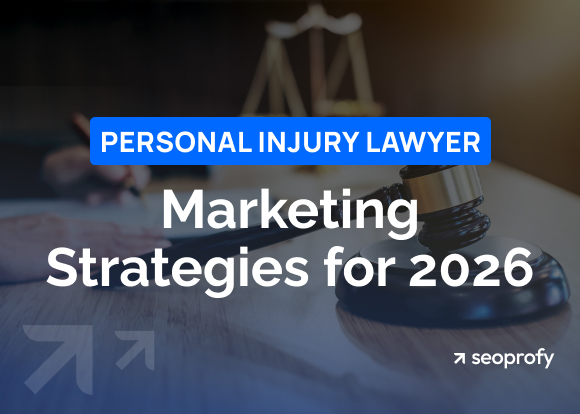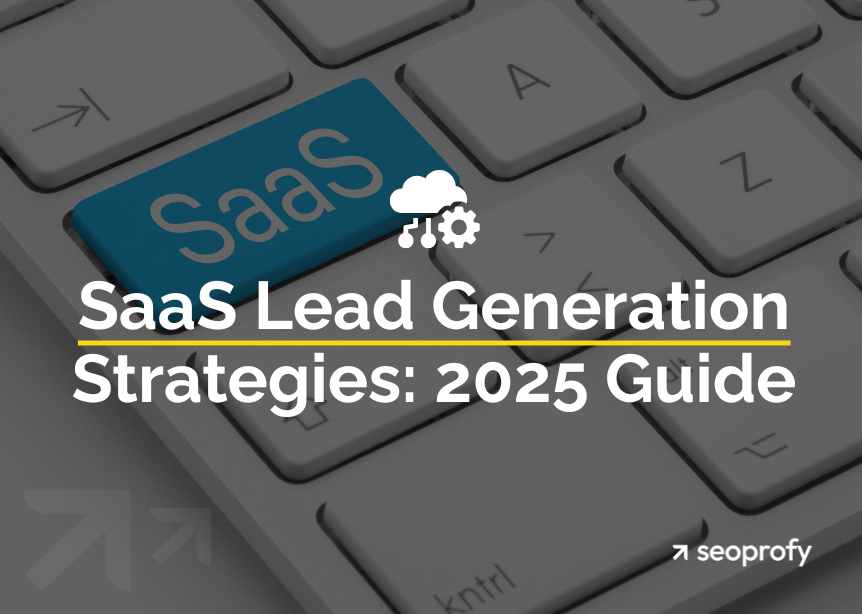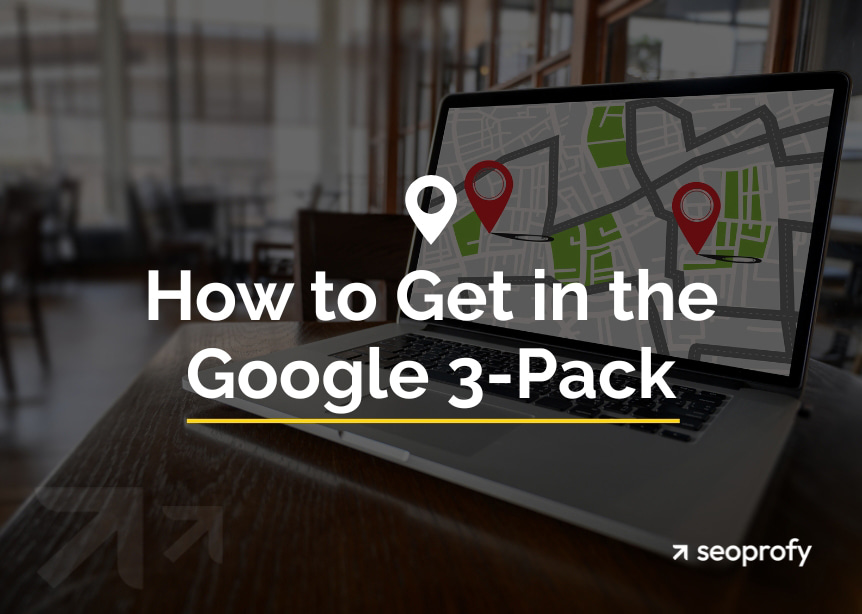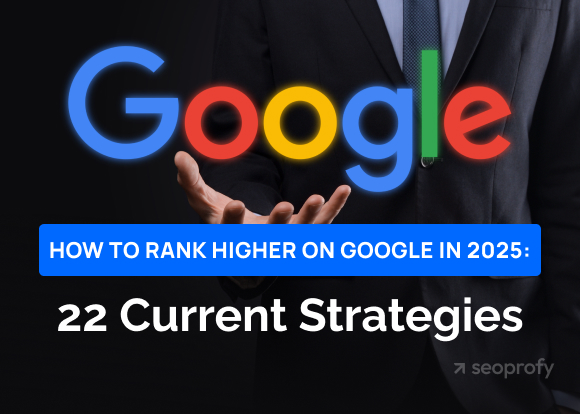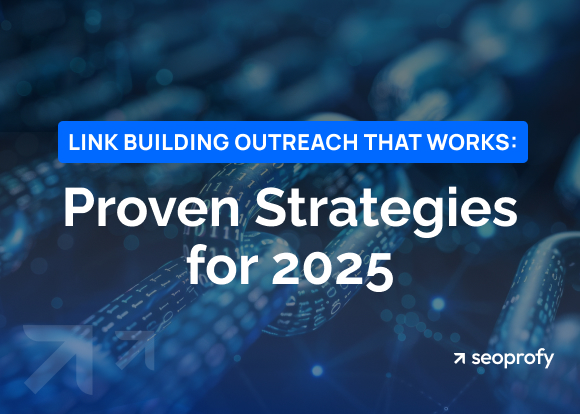Lead generation is a way to invite more prospects to your business and turn them into customers and brand advocates. Although lead generation and SEO are different, they fit well when combined.
SEO helps you optimize all aspects of your site, such as structure, content, and links, so more clients can find you in search results. The more people see and engage with your website online, the more chances you have to turn them into leads.
In this post, we’ll explain how you can get started with SEO for lead generation and give you ten proven tactics, plus bonus tips, to help you see more customers and sales.
- SEO brings in leads through optimized website content, keywords, and backlinks.
- Over 50% of consumers use search engines daily to look for products and services.
- High-quality content that matches the user’s intent can help businesses rank better and attract more leads.
- Fast and error-free websites increase engagement and conversion rates.
- Tracking your results is a must as it gives you insights into how well your SEO efforts are working.
What Is SEO Lead Generation?
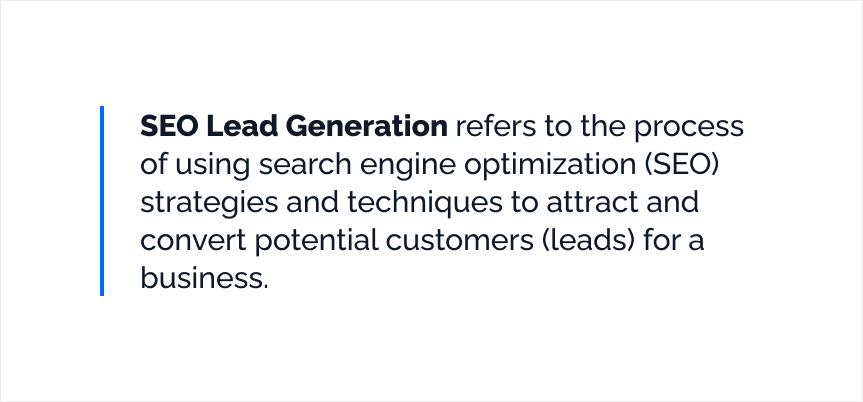
SEO lead generation is the process of driving more prospects by optimizing your website with the right search terms, creating relevant content, securing backlinks, and fixing technical issues. That’s how you can rank higher in organic search results and attract more potential leads to your business.
Why Is SEO Important for Your Business Growth?
Search engine optimization (SEO) is one of the marketing channels each type of business can benefit from. Every day, 59% of people go to Google to find products or services. This alone shows the importance of search engine optimization. In simple words, it’s what helps you place your business directly in front of the eyes of potential clients.
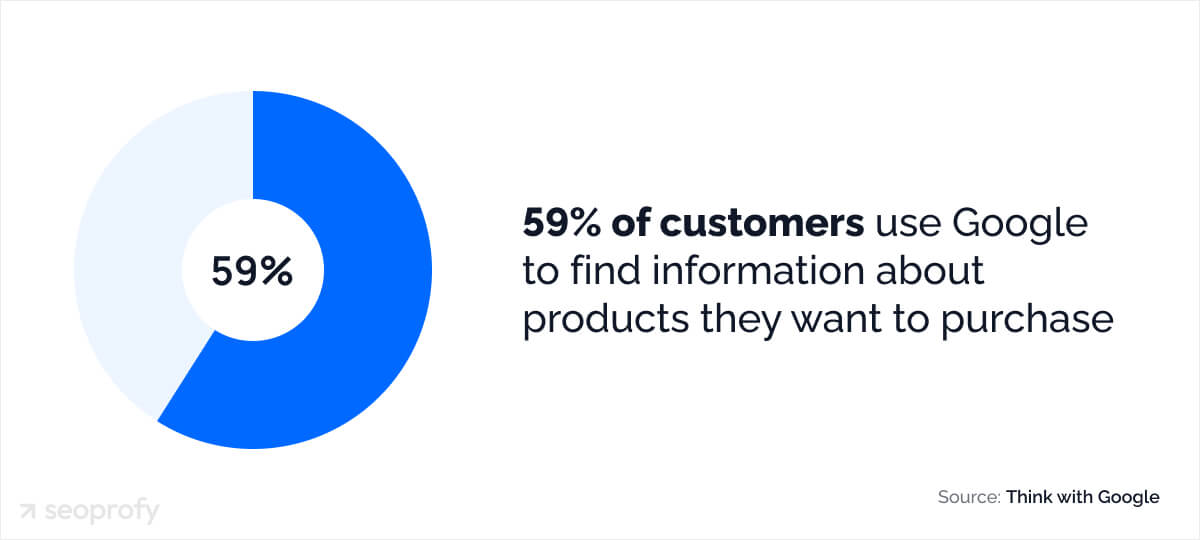
Of course, it’s not the only reason why SEO should be included in your business promotion strategy. There are also other advantages worth mentioning:
- You can attract more targeted traffic with specific, long-tail keywords that usually show purchase intent.
- With high-quality and SEO-friendly content, you can nurture and build trust with your audience and make them more interested in becoming leads.
- Link building strategies can help your business get mentions on authoritative websites, which will increase its credibility with both the audience and search engines.
How Does SEO Impact Lead Generation?
As we have said before, SEO and lead generation are different, though they have a similar purpose. While the latter aims to draw in more prospects to your business, SEO deals with improving your position in Google and driving more website visitors through search engines.
And when your website ranks higher, more prospects can see it in search results and take action. These visitors aren’t random — they’re actively searching for what your business offers.
Therefore, SEO can amplify your lead-generation efforts. With a well-planned strategy, you’ll be able to increase your visibility online, build trust with your prospects, and drive more sales.
From law firms to B2B businesses, we’ve helped companies in many niches to drive more visitors and convert them into leads that fuel growth. We make sure our strategies are customized to your needs and are based on data, so you can:
- Attract more qualified traffic
- Rank higher for high-intent searches
- Convert more visitors into leads and sales
10 Effective SEO Techniques for Lead Generation
Now that you know how effective SEO can be for your business, let’s review ten methods you can try to get more leads:
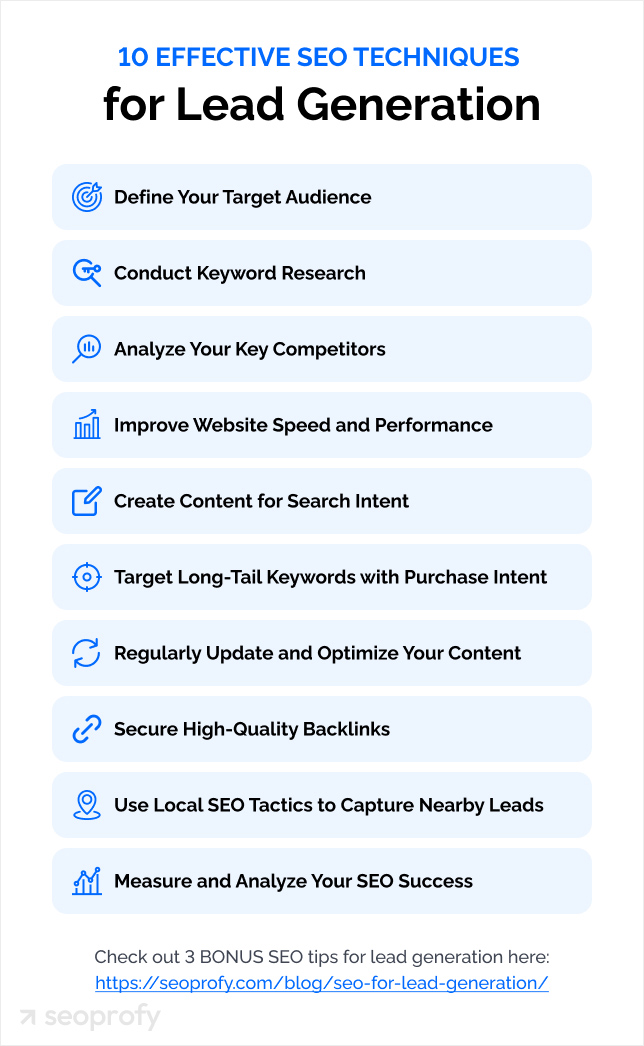
1. Define Your Target Audience
Your SEO lead generation efforts will show far better results once you have a clear understanding of who you’re trying to reach. And the more specific you get, the better.
Let’s say you are selling project management software. Simply targeting “businesses” is too broad. You need to ask yourself who your ideal customers are and how exactly your product can serve them.
For example, your ideal audience might be small tech startups with fewer than 50 employees who need affordable tools to manage remote teams. With this kind of detail, SEO for B2B lead generation gets much easier since you can pick the right keywords and craft content that connects with what they’re looking for.
To learn more about your audience, you can use GA4. Their user attribution report shows the following demographic and psychographic data:
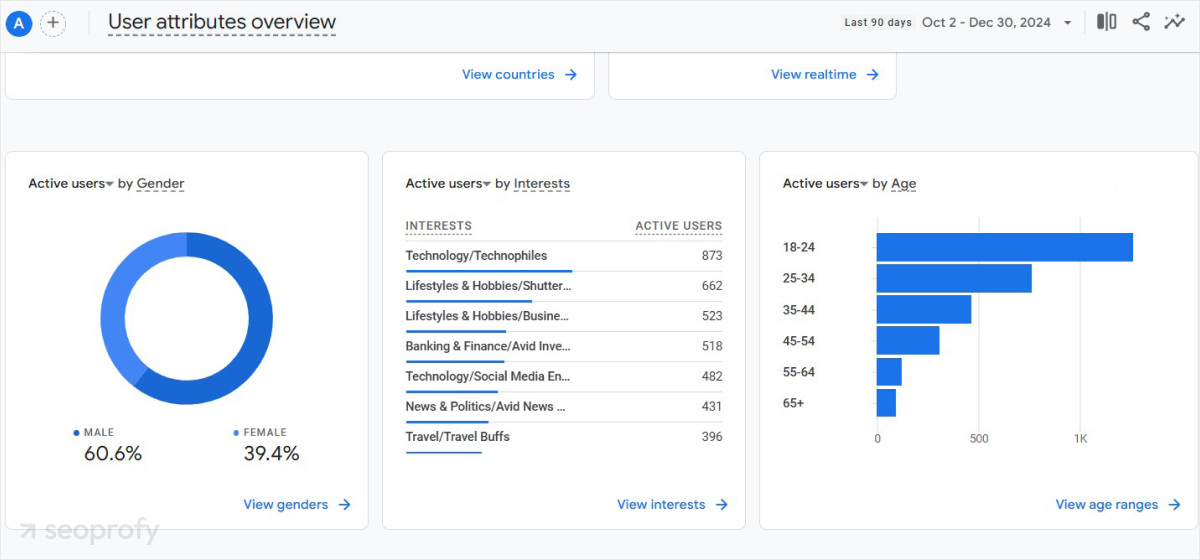
Additionally, you can leverage specific audience research tools, such as SparkToro or One2Target.
2. Conduct Keyword Research
Once you more or less know what type of people you are targetting, the next step is to identify the words and phrases they are using when searching for products or services similar to yours. In other words, you need to find your “lead gen keywords.”
There are many ways you can do that. Google Keyword Planner is a great starting point. Although not a proper keyword research tool, it shows important metrics, such as average monthly searches and cost per click (CPC). Usually, queries with high CPC tell you that there’s a clear purchase intent, so we need to keep an eye on those.
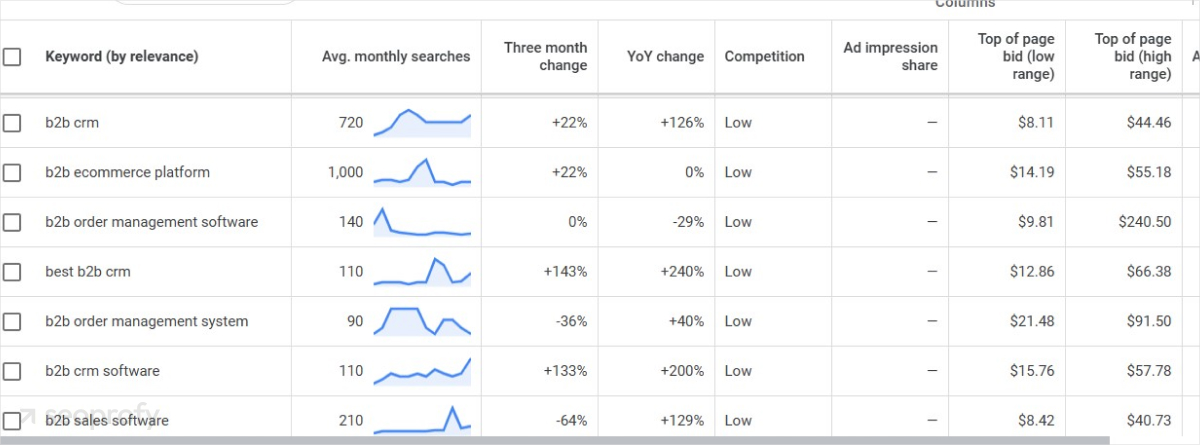
A more advanced tool for this step is Ahrefs. It offers way more details, such as how hard it is to rank for a certain term (Keyword Difficulty) and how many people are searching for this term each month (Search Volume).
Finally, you can check out KWfinder. It’s perfect if you need to find long-tail queries for your campaign. With the list of keywords ready, you can move on to the next technique.
3. Analyze Your Key Competitors
Competitor analysis is another great way to improve lead generation with SEO as it helps you see what content and keywords already resonate with your audience. There’s a free competitor analysis tool from Backlinko that you can use for this step.
Similarly, you can try the keyword gap tool in Ahrefs and Semrush to see the overlapping search terms and the ones that you’re not yet targeting. When looking at the report, we recommend checking what pages and keywords perform the best for your competitors and drive the most traffic. Here’s how it looks like in Ahrefs:
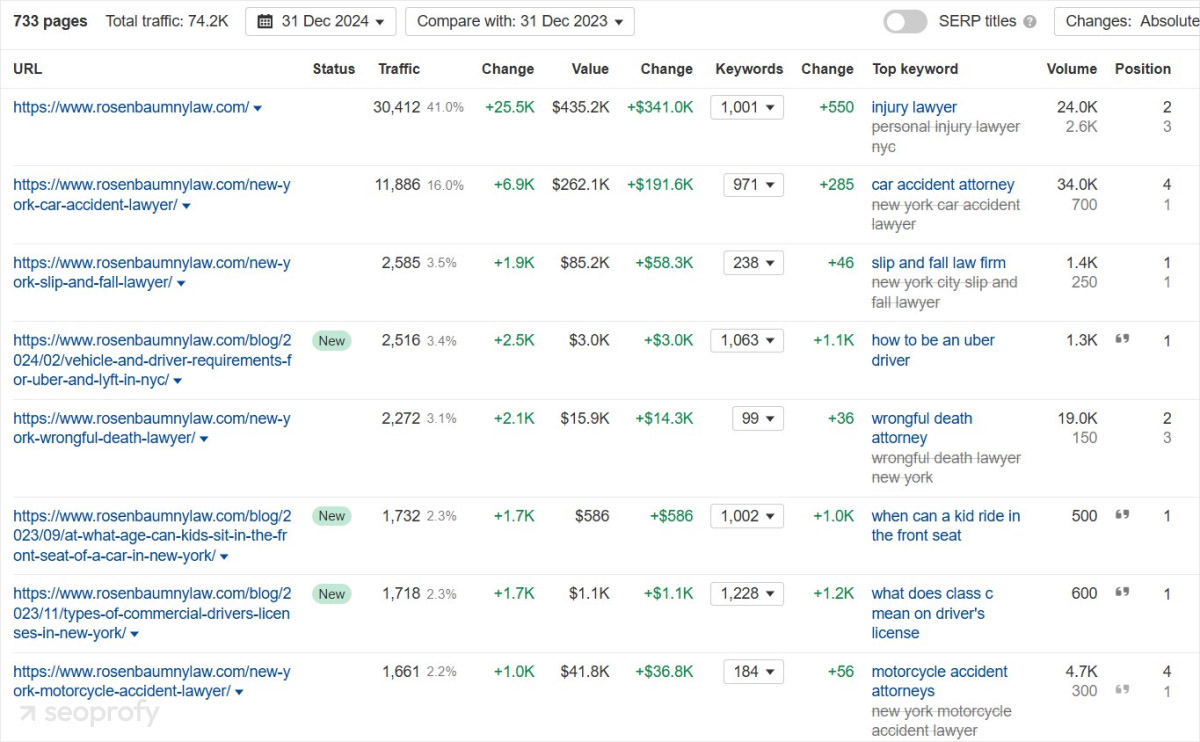
If you’re a small business and don’t have a lot of competition, you can even do it manually by checking websites in the top ten on search engine results pages (SERPs) for your target keywords.
4. Improve Website Speed and Performance
User experience on your website is another important aspect if you want to generate leads with SEO. Search engines favor sites that are easy to navigate and load quickly — and your prospective customers do, too.
If a site has a confusing interface or doesn’t work fast, the first thing you’d do is look for the exit button. And your visitors would likely do the same.
To make sure your visitors stick around, solutions like Google PageSpeed Insights can help. It’s free and provides an overview of your site’s performance and Core Web Vitals. Here are a few other best practices you can try in your SEO lead generation strategies:
- Compress images with free tools like Squoosh.
- Use a CDN to spread content across servers.
- Enable caching so returning visitors load pages faster.
- Upgrade your hosting if it’s not handling traffic well.
5. Create Content for Search Intent
Quite often, content marketing is the biggest source of leads for businesses. In the screenshot below, you can see how much traffic ClickUp, a popular project management software, generates from its blog alone:
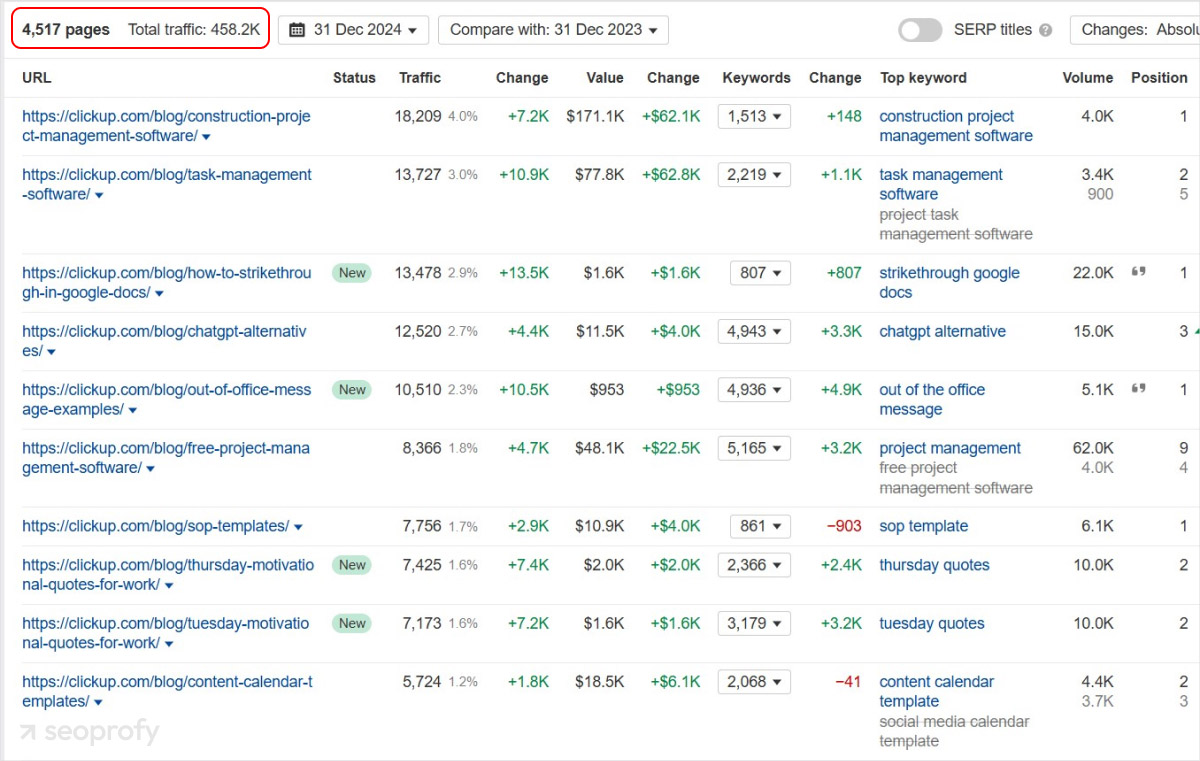
But before you start your content creation process, you need to first understand the search intent. So, what is it exactly? In simple terms, it’s the reason why someone searches online.
For example, if someone types in “What’s a project management software,” they likely want to learn more about the topic (also known as informational intent). And your content marketing strategy should match their needs.
If it doesn’t, Google may not rank your page high because it won’t satisfy what people are searching for. That means you won’t be able to drive much organic traffic and the amount of leads will also drop.
Therefore, you need to figure out the search intent behind each keyword you want to target. Tools like Ahrefs and Semrush show this metric in their reports. If you don’t have access to these solutions, you can simply check the current search results and look at the type of content that’s ranking.
6. Target Long-Tail Keywords with Purchase Intent
To generate leads through SEO and quickly drive more traffic, you’ll need to focus your efforts on long-tail keywords that show the buyer’s intent. These are specific queries that contain more than three words and usually have lower search volumes.
Targeting transactional keywords can help you attract prospects closer to making a decision even though they might not bring in a huge number of visitors. People searching for these terms often know what they want and are more likely to convert into qualified leads.
If you’re using Ahrefs, start with a broad search term and then filter for low Keyword Difficulty (KD). The screenshot below shows how you can do it:
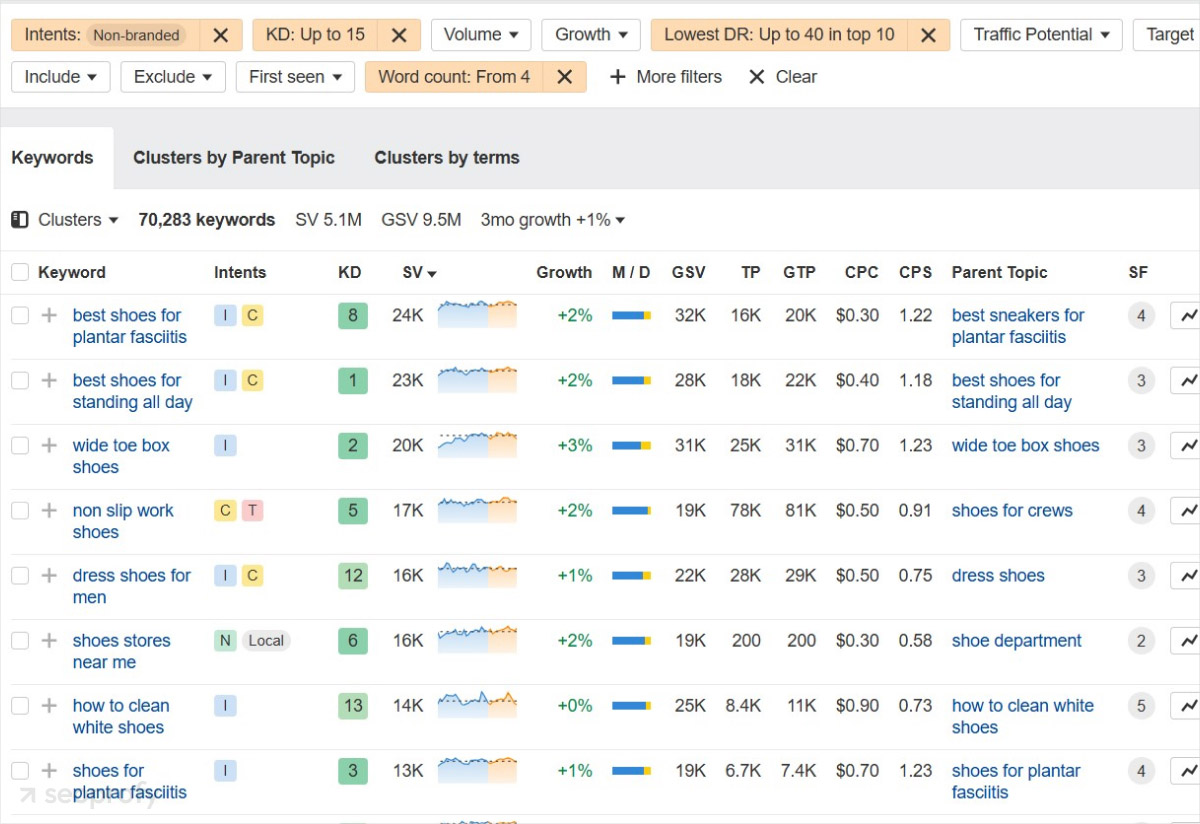
7. Regularly Update and Optimize Your Content
Customers expect accurate and up-to-date information about your products and the services/solutions you offer. Google values fresh content as well, so keeping your posts current helps you rank higher and attract more leads.
Moreover, search rankings don’t stay the same. They shift because of changes in user behavior, updated competitor pages, or Google’s algorithms. To stay relevant, revisit your posts regularly. And If your keywords aren’t performing well, you can replace them, too.
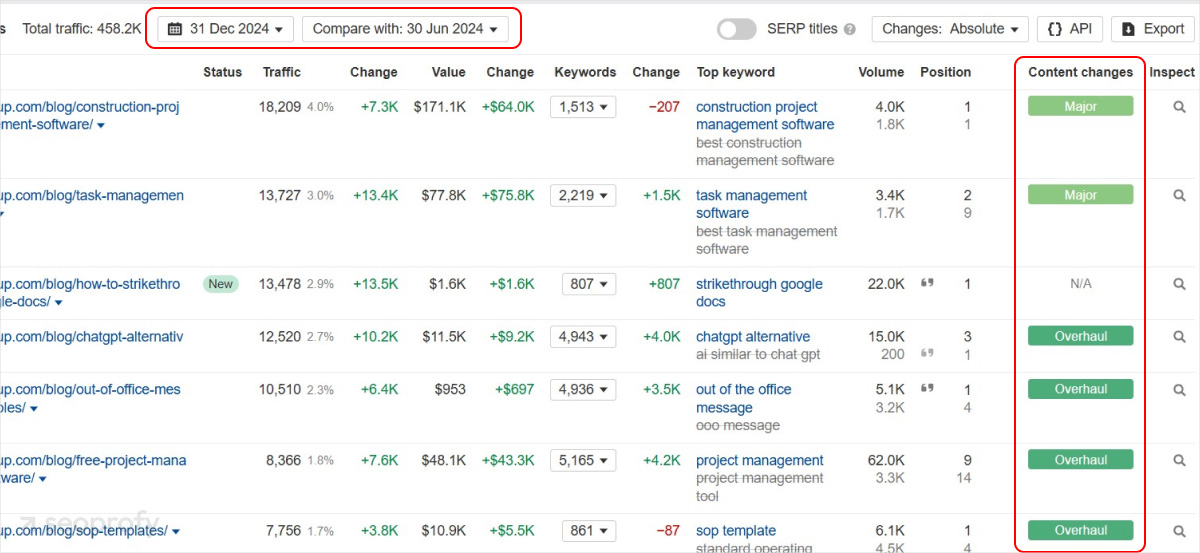
8. Secure High-Quality Backlinks
Link building is the process of getting other websites to link to yours. These inbound links have plenty of benefits. Google considers them one of the main ranking factors and they can also drive more website traffic to your site — and hence more leads.
Of course, not all backlinks are equal and sometimes mentions from spam or low-quality sites can do more harm than good to your performance and rankings. So, your focus should be on getting links from relevant, high-authority websites.
You can achieve that by guest blogging, publishing unique industry research, or creating some assets that people would feel naturally inclined to link back to.
9. Use Local SEO Tactics to Capture Nearby Leads
A recent study found that 72% of people use Google search to find services and products in their location. For businesses both online and offline, this means they can increase the amount of leads with local optimization.
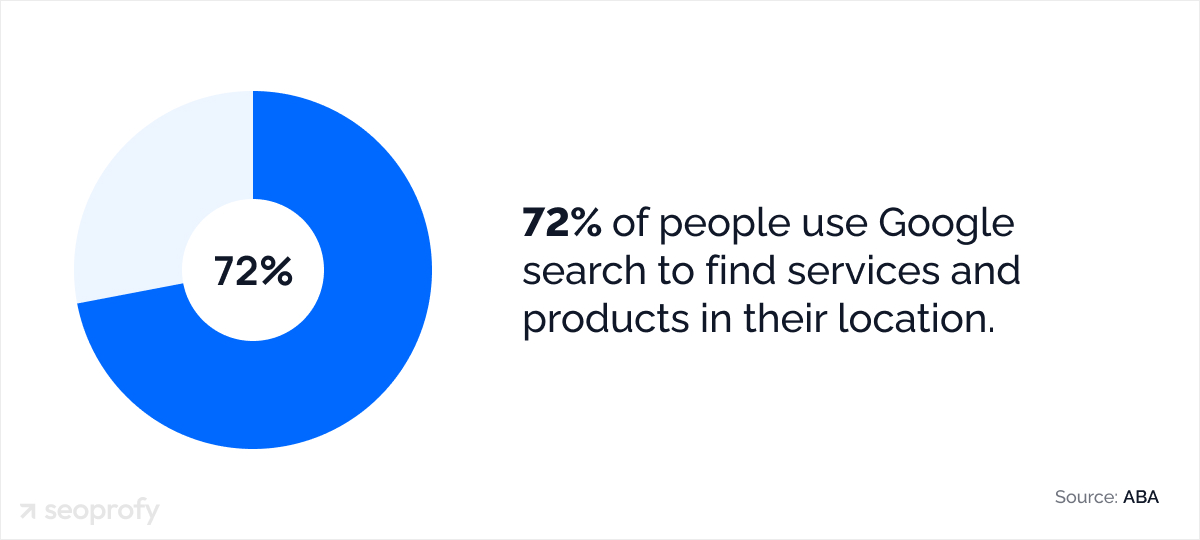
What’s more, when people search for nearby services, they usually have a higher intent to buy. To appear high in such search results, you try the following local SEO tips for lead generation:
- Use geo-targeted keywords to optimize your content and Google Business Profile
- Create business listings in relevant directories
- Engage with your customers in reviews and answer both positive and negative ones
10. Measure and Analyze Your SEO Success
Tracking your SEO performance helps identify what’s working and where you can make improvements. There are several tools you can use for this. For example, with Google Analytics 4, you can analyze user paths to see how visitors move through your site, which pages they visit, and even where they drop off in your lead generation funnel.
GA4 also monitors the users’ interactions with your site, such as clicks, video plays, or scroll depth. You are able to personalize these events to match specific actions relevant to your business.
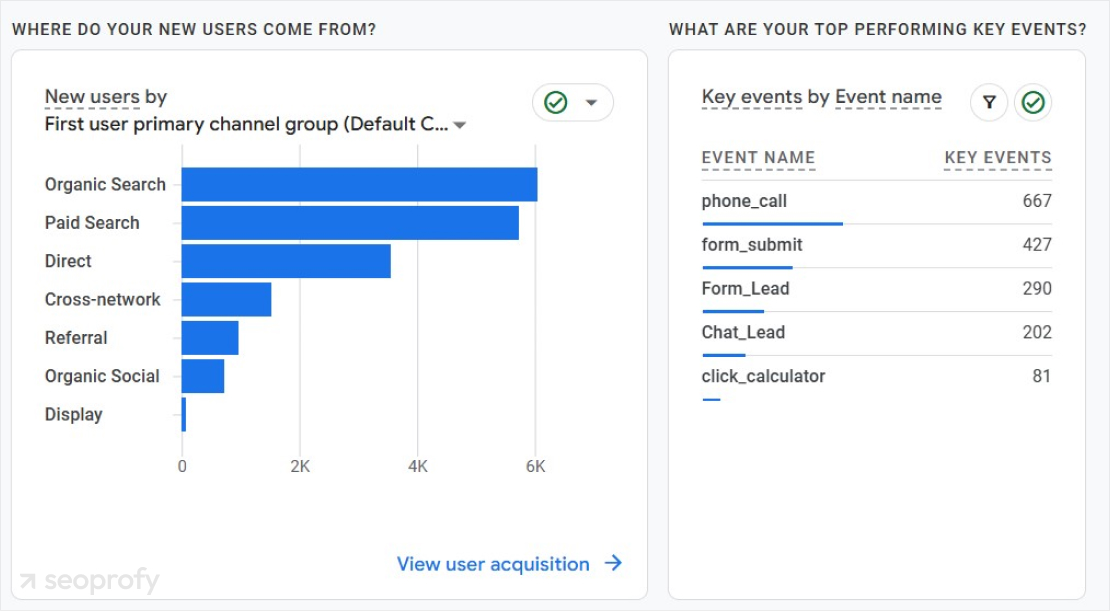
Additionally, you can track your website’s search engine rankings and traffic with tools like Semrush, SEranking, or Ahrefs to see which keywords bring visitors, how the rankings change, and compare your site to competitors.
3 BONUS SEO Tips for Lead Generation
To make the most out of lead generation through SEO, here are some bonus tips you can try:
Run Paid Ads Before Doing SEO
Before going all in on SEO, we recommend testing the waters with a PPC campaign to see if there’s a demand for your product or service. Paid ads provide quick feedback on how your target audience responds.
This can help you determine if there’s demand, which keywords drive traffic, and whether your offering resonates with users. This information will save you time so that you don’t invest in things that simply don’t work.
Use Third-Party Sites to Generate SEO Leads
Third-party platforms like Reddit, Quora, and niche forums are often ranked in the top search results for key queries in your industry. So, if you haven’t yet leveraged these sites in your SEO lead generation strategy, now is a good time to start.
That’s how you can join conversations with your target audience and get more potential leads for your business. But how do you know which subreddits or niche forums are relevant for your business? Well, you can try to do manual research.
For this, type in your query in Google and look at the search results. For example, if we enter the keyword “best car accident lawyers,” it’ll show us the forums and discussions related to it. And our goal is to get mentioned there, just like Morgan and Morgan did.
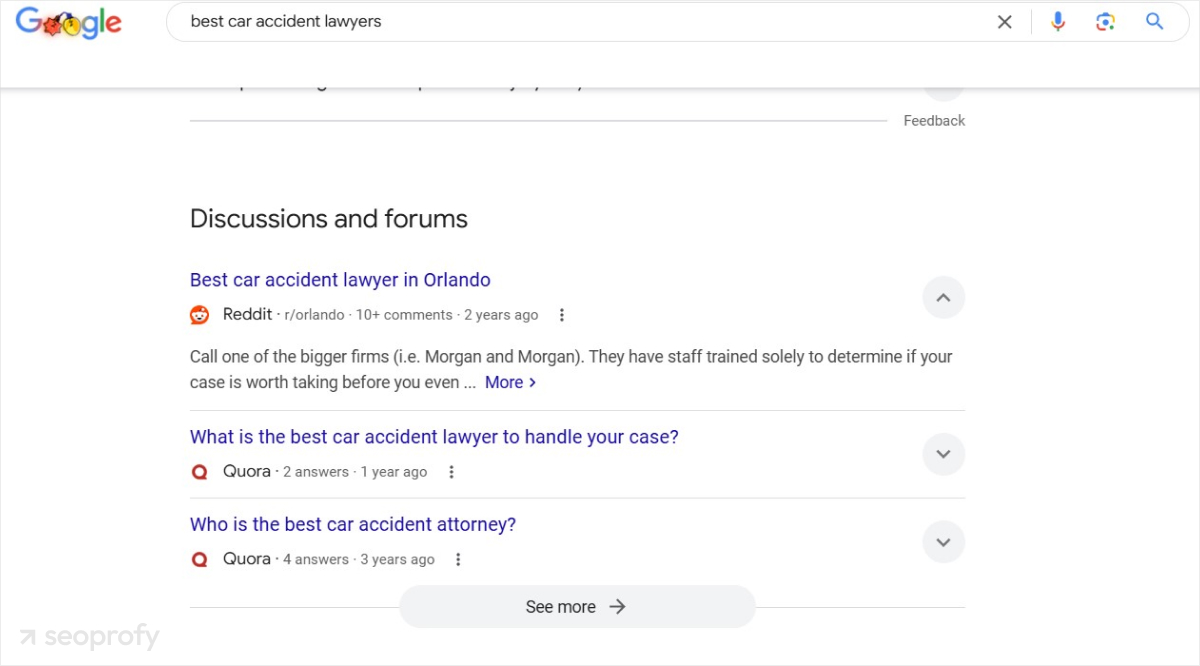
Optimize Your Site for Conversions
The main aim of Conversion Rate Optimization (CRO) is to make your website as effective as possible in converting visitors into customers or leads. A Ruler Analytics survey found that an average conversion rate was 2.9%. Of course, this rate varies depending on the exact industry.
So, if your site is in the 2-3% range, you’re doing well. Still, if you increase your conversion rate by just one percent, you can almost double the number of leads and customers.
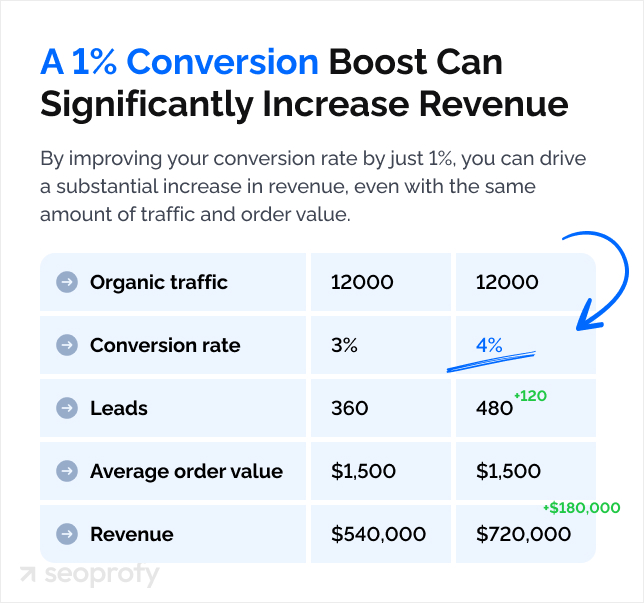
Sounds like something worth trying, right? The good news is that it doesn’t take much to see these results. Here are some of the best practices you can try:
- Optimize your landing pages for lead generation. Make sure each page has a clear goal, like capturing emails or encouraging sign-ups.
- Speed up your site. Apart from giving a better user experience to your users, it can improve conversion rates and your revenue, too.
- Whenever relevant, personalize your call-to-action. We have all seen the “Book Now” or “Talk to an Expert” buttons. And people love novelty and when these buttons speak to them. HubSpot also found that personalized CTAs perform 202% better than generic ones.
- Place your CTAs strategically. This can be near product details, in the right upper corner of the screen or in the checkout area.
- Use social proof on your site. Trustpilot’s study found that a positive star rating and reviews can make customers 86% more likely to purchase.
- Make your site mobile responsive. People love to browse on their phones and it’s important that whenever they land on your site, they can easily navigate it and find what they need.
How to Capture and Convert SEO Leads into Sales
With conversion strategies discussed, let’s now look at the practical ways you can try to turn clicks into clients:
Offer Lead Magnets
A lead magnet is a common strategy in digital marketing for lead generation. It helps you attract potential clients by offering a free resource in exchange for their contact details. As for the formats, you can choose from:
- E-books
- Webinars
- Free trials
- Mini-courses
- Downloadable templates
Sometimes, you might need more than one lead magnet, especially if you’re trying to target different segments. For example, HubSpot offers various courses on marketing, industry studies and free templates for their prospects. Such versatility helps them cover all the needs of their potential customers.
Use Lead Forms and Calls-to-Action Effectively
Your lead forms should be simple and easy to fill out. Ask only for the most essential details to avoid overwhelming potential clients. Clearly label fields (e.g., “Phone Number”) and add short instructions if needed.
To make it more efficient, pair your forms with clear calls-to-action such as “Download Your Free Guide” or “Sign Up for a Free Trial.” Make sure these buttons are visible and positioned where users will notice them.
You can also create relevant pop-up CTAs to capture the attention of your visitors at the right moment. For example, when they stayed on your site for some time or are about to leave.

Implement Lead Nurturing Strategies
In most cases, only a small percentage of your leads will be ready to act immediately. So you’ll need to follow up with helpful emails and content that add value, such as practical tips, case studies, or exclusive offers.
For instance, if someone downloads your guide, you can send them additional advice that ties into their interests or explains how your solution/service fits their needs. This can keep your business on their radar and increase chances of converting them.
Use CRM and Automation Tools to Manage Leads
A CRM system, such as HubSpot or Salesmate can support you in managing and tracking your leads. These SEO lead generation tools show where each lead is in the sales process, what content they have interacted with, and how engaged they are.
Furthermore, automation software can help you send follow-up emails, schedule reminders, or personalize communication based on user behavior. This way, you can always engage leads at the right time and don’t lose track of opportunities.
Final Thoughts
We went through the best techniques on how you can use SEO for lead generation. From writing optimized and helpful content to building backlinks and speeding up your site, you now have the roadmap to consistently grow your business over time.
At our SEO agency, we’ve helped many businesses increase their sales and revenue through data-driven and personalized optimization campaigns. Learn more about our services today or schedule a free consultation to discuss how we can help your company thrive online.





